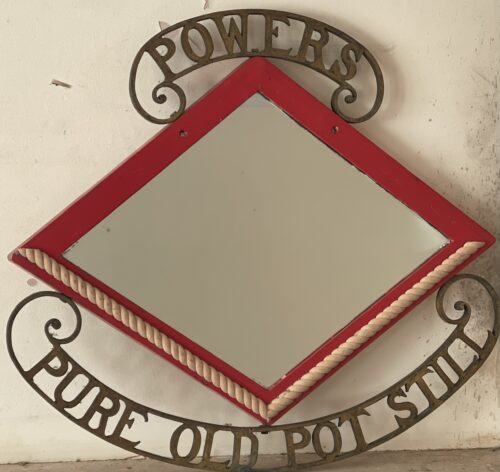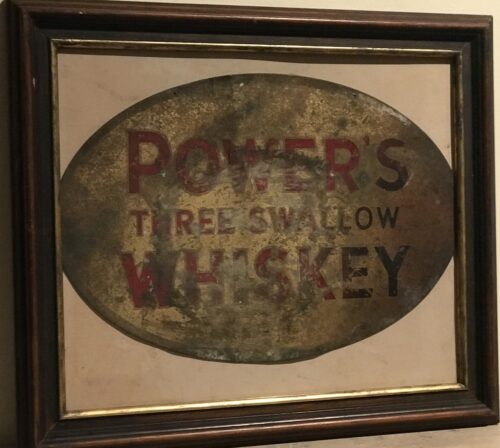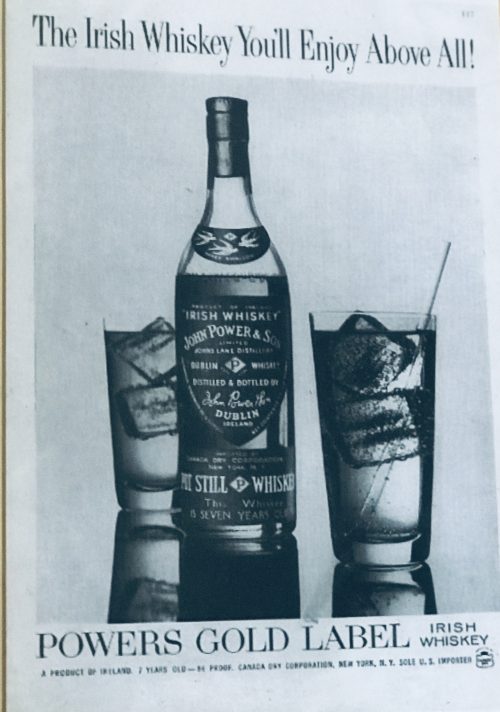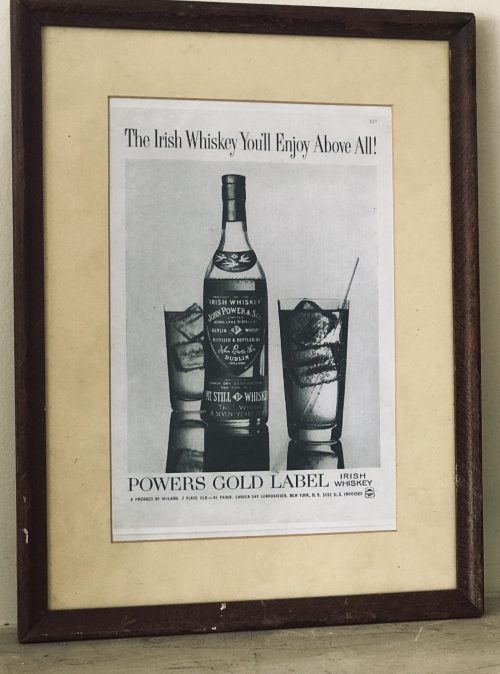Paul McGrath - The Black Pearl of InchicorePaul McGrath is one of the greatest footballers to ever play for the Republic of Ireland soccer team. The fact that he managed to perform so well for so long for his clubs and country is all the more remarkable because he was beset by ongoing injury problems and off-pitch issues. McGrath suffered many injuries to his knees over his career and the effects of his alcoholism caused him to miss matches for football club and country on occasions. McGrath was a natural and magnificent athlete with outstanding soccer talent. His preferred position on the football pitch was at centre-half however the Irish soccer manager Jack Charlton, often deployed him with great success in midfield. From an Irish perspective two of his greatest performances for the Republic of Ireland soccer team were both against Italy and both at World Cup finals. His performance in Rome in 1990 and particularly in New York in 1994 are the stuff of Irish football legend. Paul McGrath - Early DaysPaul McGrath was born in London in 1959. His mother, Betty, was Irish and the father that he never met was Nigerian. They were not married and in those unenlightened days such a union would have been very much frowned upon. Raising a mixed race baby as an unmarried mother in Ireland in those days just wasn't on so for most people so McGrath's mother headed for London. Shortly after Paul was born his mother came home to Dublin and put her baby up for adoption. McGrath was raised in orphanages and foster homes in Dublin. As a boy Paul McGrath's love was soccer. It was his means of self-expression and in ways it was a form of escape. His natural talent was apparent from an early age. He played his schoolboy soccer for Pearse Rovers and later he played junior football for Dalkey United. McGrath - the Professional FootballerSt Patrick's AthleticIn 1981 Paul McGrath became a professional soccer player when he signed for St Patrick's Athletic in Inchicore, Dublin. It was during his short football career with St Pat's that his performances on the pitch were so good that he was dubbed 'The Black Pearl of Inchicore'. McGrath's physique, presence and pure football talent made him stand out on any football pitch that he graced and it wasn't very long before the Irish scouts of English football clubs came calling. Manchester UnitedAfter just one season with St Pat's Paul McGrath's left Ireland in 1982 to begin his English soccer career with Manchester United having been spotted by United's talent scout Billy Behan. At the time United were managed by Ron Atkinson and the team played with a smile on their faces and in a somewhat cavalier fashion. Atkinson was a larger than life character and McGrath took to him immediately. After some initial difficulty in adjusting to the demands of the United training routine Paul settled down to the life of a professional footballer in Manchester. He was helped by the fact that there were other Irish soccer players at the club such as Frank Stapleton, Kevin Moran and Ashley Grimes. His debut was in the 1982/83 season in a charity match against Aldershot. His league debut was against Tottenham Hotspur in November 1982. Paul went on to make 163 appearances, scoring 12 goals and winning an FA cup medal in 1985 with United. If McGrath felt he had a good relationship with Ron Atkinson, it was clear from early that the Alex Ferguson - Paul McGrath relationship would be not be a comfortable one. Ferguson is renowned as a disciplinarian and McGrath's drinking problems would not allow him to conform to the new stricter regime. Eventually the time came for Paul to find new soccer pastures. Aston VillaPaul McGrath transferred Aston Villa in 1989. He was an instant success and the Villa fans embraced him and his sublime footballing skills. Ultimately he was known as 'God' by the fans such was the esteem in which they held him. In the early 1990's Aston Villa were a soccer force in the old Division One (now Premier League) and McGrath was instrumental in the club's push to win the league. Villa were runners-up in 1990 and again 1993. Paul McGrath's performances on the soccer pitch were such that he was voted the PFA Players' Player of the Year in 1993. This was an amazing feat by Paul since "He was, quite literally, a walking wreck" as noted by author Colm Keene in his book: Ireland's Soccer Top 20. McGrath gained a measure of revenge over Alex Ferguson and Manchester United in 1994 when he helped Aston Villa to beat them at Wembley in the League Cup final. Paul played 252 times for Villa scoring 9 goals in the process. Derby County & Sheffield UnitedIn 1996 Paul McGrath finished his Villa career by joining Derby County for whom he played 24 times. His final club was Sheffield United but he only managed 11 appearances as his knees could no longer take the punishment. He retired from soccer in 1998. International Career Typical of Paul McGrath
Ireland V Latvia - 1993
Typical of Paul McGrath
Ireland V Latvia - 1993In Dublin Paul McGrath made his international debut for the Republic of Ireland international soccer team in 1985 in a friendly against Italy. The Italians would later be the opponents for two major highs in his international career. He subsequently featured in two of Ireland's three matches in the Euro '88 football finals in Germany. While his preferred position was centre-half he was competing with the likes of Mark Lawrenson, David O'Leary, Kevin Moran and Mick McCarthy for a berth in the defence. When Jack Charlton took over as the Ireland soccer manager he recognised that with those players he did not need McGrath in defence but he also recognised that McGrath was too good to leave out of the team. Charlton's solution was to play Paul in midfield. He was certainly good enough and he repaid his manager's faith in spades. Paul McGrath represented his country 83 times on the football pitch scoring eight goals. It is difficult to recall a single poor performance by Paul when playing soccer for Ireland. Even when playing out of his normal position on the pitch invariably he was one of the star performers match-in match-out. Two stand-out performances spring to mind when Irish soccer fans are asked about Paul's greatest matches for Ireland. Both were against Italy. In the quarter final of the 1990 World Cup in Rome Italy were overwhelming favourites to win the match. In a very good overall team performance McGrath's performance stood out as the Irish lost narrowly 1-0. Great as that performance was, and it really was great, Paul gave an absolute master class four years later in the opening group match in the World Cup finals in New York. Back in his favourite position at centre-half McGrath was simply magnificent. Ireland lead from early through a Ray Houghton goal. The Irish defence had to endure some periods of sustained attack from the talented Italians. Time and again McGrath repelled Italian attacks, snuffing out danger early, making last ditch tackles, and making towering clearing headers. His performance had it all including one cameo where he made a number tackles in quick succession finally taking a shot full in the face. Unbelievably he was back on his feet in a flash ready to stop whatever else the Italian attack could throw at him. During Paul McGrath's international career Jack Charlton acted very much as a father figure to Paul and there seems to have been a genuine warmth between them. Like Ferguson, Jack Charlton cuts quite a strict authority figure yet when it came to handling Paul, particularly when it came to dealing with his drinking problems, Charlton dealt with him sensitively and compassionately. Paul McGrath's Knees & Need for AlcoholThere is no doubt that Paul McGrath had the ability and soccer talent to become one of the true greats of World soccer. One really has to about wonder what he could have achieved if he hadn't been plagued by injuries and if he hadn't been afflicted by alcoholism. McGrath had never been injured while playing soccer in Ireland yet in the last game in his first season in England he was injured in a bad tackle. This resulted in the need for surgery and it was to be far from the last time he would need to go under the knife. Thus began the Irish nation's obsession with Paul McGrath's knees. Paul had been getting a bit frustrated at not being able to secure a permanent first team place. Gordon McQueen and Kevin Moran, both experienced and talented players, had the two centre-half positions nailed down. The first injury of his career compounded his frustration and so to escape his negative feelings he resorted to alcohol. On his recovery from the injury McGrath threw himself into his training, pushing himself harder than ever. Paul now believes that the "hard" training sessions employed by United contributed significantly to his knee problems. The injuries continued to interrupt his progress and it seemed that almost every injury required surgery. Allied to that, McGrath had signed up to then existent United drinking culture. His particular partner in crime was Norman Whiteside who was also injury-prone. Eventually Alex Ferguson concluded that something had to change and the manager decided that Paul McGrath would be transferred from Manchester United. Paul's drinking and his successive injuries effectively ended his career with the biggest soccer club in England. The rest of his football career was occasionally blighted by the effects of his alcoholism causing to miss training and matches. He later admitted were that there times that he was still under the influence when playing soccer matches. Over the years Paul had to undergo surgery on eight occasions on his knees. In the final few years of his career McGrath employed a personalised training program that was designed to reduce the impact on his knee joints. Close to the end of his Aston Villa career McGrath could not train at all. He relied upon the football matches to keep up his fitness levels. All the while he was playing with a significant level of pain so much so that he could not even warm up properly for matches Retirement from Soccer and Back in IrelandAs a footballer, Paul McGrath, is sadly missed by his fans. His autobiography reveals just how heroic this giant of Irish football is - although it makes for harrowing reading at times. McGrath had to contend with problems that would have broken most other men yet this legend had an outstanding football career and produced unforgettable sporting highlights for an adoring public. In one of his last matches, in a man of the match performance, McGrath inspired Derby County to a shock defeat of Manchester United at Old Trafford. Ferguson said after the match "You have to wonder what a player McGrath should have been." He also commented that "Paul had similar problems to George Best [but] he was without doubt the most natural athlete in football you could imagine". True praise from a football legend who knows a thing or two about football talent. Truly Paul McGrath is an Irish soccer great now living in County Wexford, Ireland. To see what others thought about this Irish football legend click on Paul McGrath quotes. Paul McGrath - Manchester United & Ireland Statistics |
 |
|
References : |









 Toners won “Snug of the Year” 2010, a competition hosted by Powers Whiskey. 110 pubs across Ireland were shortlisted, and after counting the public’s votes Toners was announced the winner. A snug is a private area separated within a pub and is a timeless feature in a traditional Irish pub. Like the one in Toners, it typically has its own door, a rugged bench and is completely private. Back in the day it was where the likes of policemen, lovers and the Irish literati met up.
Toners won “Snug of the Year” 2010, a competition hosted by Powers Whiskey. 110 pubs across Ireland were shortlisted, and after counting the public’s votes Toners was announced the winner. A snug is a private area separated within a pub and is a timeless feature in a traditional Irish pub. Like the one in Toners, it typically has its own door, a rugged bench and is completely private. Back in the day it was where the likes of policemen, lovers and the Irish literati met up.

















